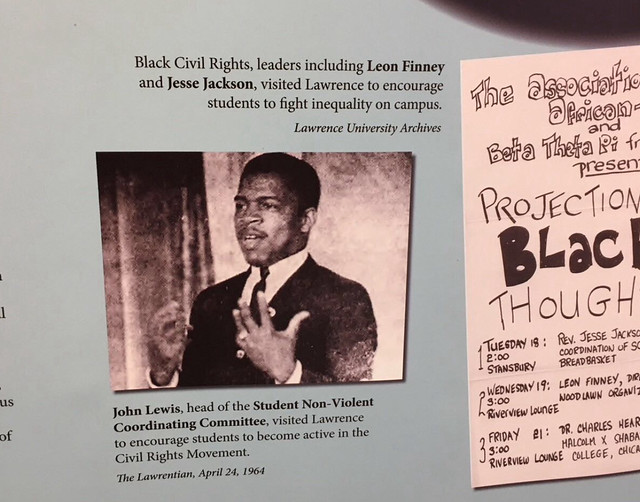A Stone of Hope, an exhibit which opened in the Mudd Gallery this past Wednesday, explores Black life in the Fox Cities from the 1700s up until the present day. The exhibit, organized by the History Museum at the Castle, has traveled throughout the Fox Cities over the last two years and is making it’s return to the Seeley G. Mudd library.
The exhibit tells a multifaceted story of the lives of Black Fox City residents. Before the 20th century, there was a growing black population many of whom were veterans of the the Civil War, business owners, and community leaders. In fact Lawrence admitted several residents of the Fox Cities as early as 1856. However with this growth of the Black population and social standing also came a rise in racially motivated harassment, discrimination, and violence. By 1920 most Black residents had left the Fox Cities. This continued throughout the twentieth century as Appleton was an unofficial “sundown town” well into the 1960s.
A Stone of Hope confronts Appleton and Lawrence’s long history of white supremacy, but in doing so also honors the many activists that have worked tirelessly to challenge these structures – in the area and throughout the country. The title of the exhibit is taken from a speech given by Martin Luther King Jr. at UW Fox Valley in 1967 in which he challenges the white community to work towards inclusion saying the Fox Cities could emerge from a “mountain of hate” as a “stone of hope” in the Civil Rights Movement. While King imagined the Fox Cities as a haven from racism there is still no doubt a great deal of work to be done to achieve this. The exhibit ends looking towards the many Fox City residents who continue to strive towards this goal.
A Stone of Hope, which was made possible in part by the work of the Mudd’s very own Erin Dix and Antoinette Powell, will be on view in the Mudd Gallery until April 20, after which it will be moved to the Conservatory. Be sure to spend some time with this information and impactful exhibit before it closes.
Save
